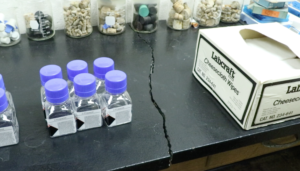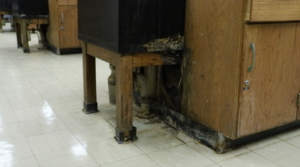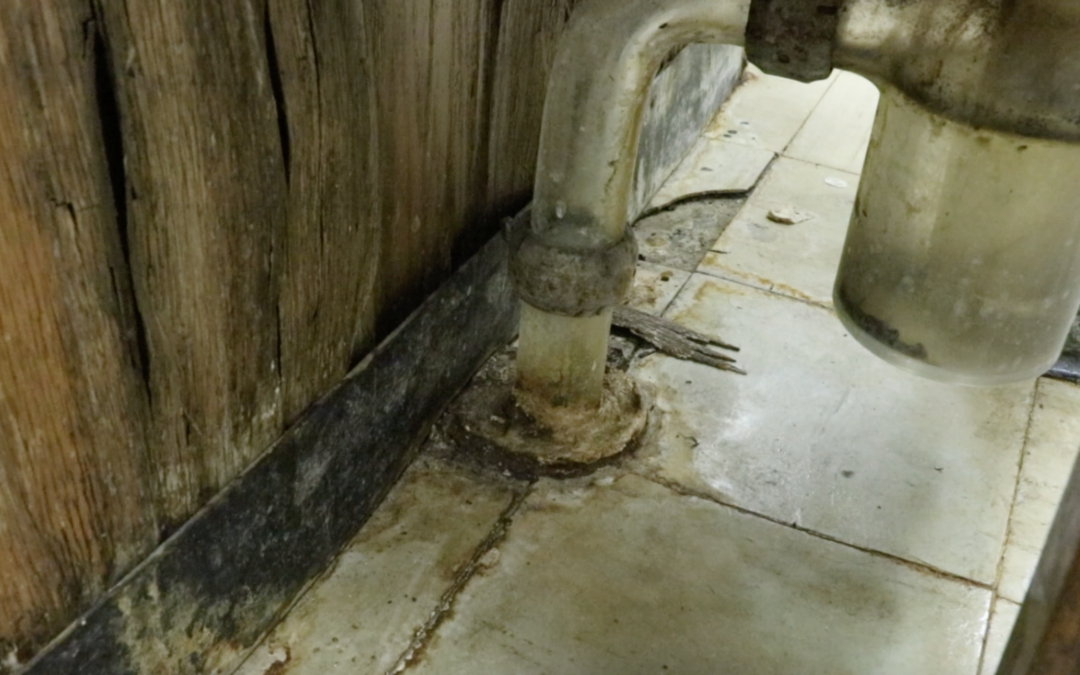Chemistry students are concerned about the presence of asbestos in the chemistry department on the fourth floor of the McFarland science building, but a professor in the department is adamant that students are not at risk.
Asbestos is a naturally-occurring fiber that was used in construction, insulation and manufacturing for its fire-resistant qualities. In 1955, a study discovered that asbestos workers are ten times more likely to develop lung cancer than the rest of the population. Public and non-profit private schools are required by the Environmental Protection Agency to protect students and employees from asbestos exposure.
The asbestos in McFarland is contained in the tile floors that cover the various chemistry labs in the “Old McFarland” hallway, and in the approximately seventy-year-old lab benches. Senior chemistry major Rachel Brooks said that the asbestos in the floor is something that she jokes about with her classmates, but it is still a danger that they must remain aware of.

“Because of the damages that asbestos can do, the department and the students have been jokingly saying, ‘we really need to get rid of the asbestos because if we drop something in the floor, and it’s heavy enough, it will crack the tiles,’” Brooks said. “And as soon as the tiles crack, that’s the danger. Even just a hairline fracture, it’s a danger.”
Though she confirmed the presence of asbestos in the chemistry department’s tile flooring, chemistry professor Dr. Linda Phipps said students don’t have much to worry about.
“As long as the floors are in good shape—and through McFarland, they’re usually buffed and waxed and held down—those [asbestos-containing tiles] don’t pose any kind of risk,” she said. “So the recommendation for K-12 schools is that as long as the asbestos-containing material is in good shape, then they recommend not removing it.”
Another concern raised by Brooks was the possibility of water damage from the aging plumbing systems in the labs. According to an “Asbestos Awareness Training” information page created by Environmental Health and Safety at Oregon State University, water damage can increase the friability of asbestos, meaning that it more easily releases into the air. Asbestos is considered dangerous when inhaled because it is very difficult for the body to break it down once it enters the lungs or digestive system.

“There are issues when you have maintenance problems like that,” Phipps said. “They try to replace the floor tiling, put them back into place—the maintenance workers are aware of the material—but when floor tiles pop up and start to break, that becomes a problem.”
Phipps noted that the water damage combined with the asbestos could theoretically be a health risk, but that the scientific consensus is that the diseases caused by asbestos require long-term exposure to high levels of asbestos fibers. She compared the risk of contracting a disease from one exposure to asbestos with the risk of getting cancer from a single exposure to secondhand smoke.
“If you walk by someone that’s smoking a cigarette, you incur risk, but your chances of cancer increase with a lot of repeated exposure,” Phipps said. “It’s probably more of an issue to those of us that are working on the floor than to students who are here sporadically.”
Asbestos is banned in 55 countries but not entirely banned in the United States. However, there are stringent restrictions on the management of asbestos in schools.
Many structures built in the United States before the late 1990s contain asbestos. The McFarland Science Center was completed in 1967. A new addition was completed in early 2016, but it left about half of the building untouched, leaving some students in the department with concerns about working and studying in McFarland.

